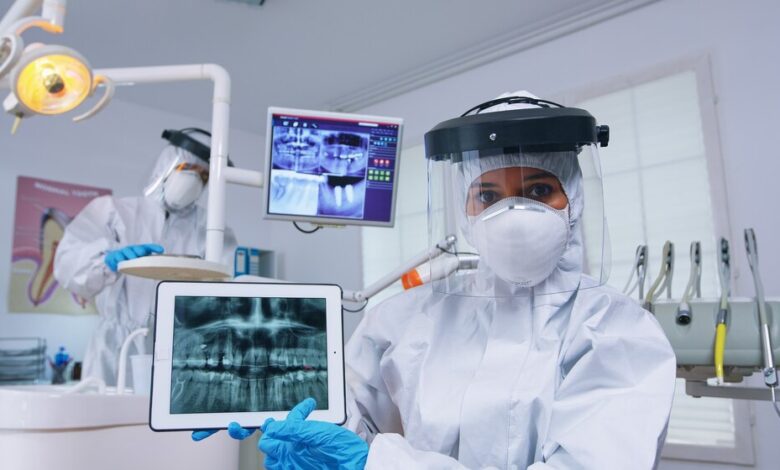
The world of dentistry has undergone a profound transformation over the past few decades. Once reliant on basic tools like mirrors, probes, and traditional X-rays, modern dental clinics are now adopting cutting-edge technologies that enhance patient experience, improve diagnosis and treatment, and ultimately revolutionize oral health care. At the forefront of these changes are technologies such as 3D imaging, laser dentistry, and digital workflows. The incorporation of these advancements is not only making procedures quicker and less invasive but is also shaping the landscape of dental marketing and elevating the standards expected of a competent dentist.
The Shift Toward Digital Dentistry
Digital technology has permeated nearly every aspect of dental care. From digital impressions to CAD/CAM (computer-aided design/computer-aided manufacturing) systems, dental clinics are now able to streamline the way they diagnose, plan, and execute treatments. These technologies minimize the margin for error and reduce time spent on procedures, providing patients with more precise and efficient outcomes.
One of the biggest game-changers in digital dentistry is the use of 3D imaging. Traditional X-rays, while still valuable, can’t offer the same level of detail as modern cone-beam computed tomography (CBCT). This 3D imaging technique provides a more comprehensive view of the patient’s jawbone, teeth, and surrounding tissues, which is crucial for planning complex procedures such as dental implants or root canals. This detailed analysis helps a competent dentist make better clinical decisions, ensuring that treatments are tailored to the unique needs of each patient.
Laser Dentistry: A Gentle Approach to Treatment
Laser technology is transforming the way many dental procedures are performed. Using dental lasers, dentists can now treat issues like gum disease, tooth decay, and even perform certain types of surgeries with greater precision and less discomfort for the patient. This is because lasers minimize the need for drills or scalpels, meaning that treatments are often less invasive and require shorter recovery times.
In the past, many patients avoided dental visits due to fear of pain or discomfort, particularly with traditional methods like drilling. Laser dentistry addresses these concerns, creating a more pleasant experience. This not only contributes to better patient outcomes but also benefits dental clinics in terms of reputation and client retention. A competent dentist who embraces laser technology can market their services as more patient-friendly, making it easier to attract individuals who might otherwise avoid care due to anxiety or fear.
The Role of Artificial Intelligence in Dentistry
Artificial intelligence (AI) is making its way into dental clinics, primarily through diagnostic tools and patient management systems. AI-powered platforms can analyze patient data more effectively than humans, providing dentists with valuable insights that guide treatment decisions. For instance, AI can assist in detecting cavities, gum disease, and even oral cancers in their early stages.
Furthermore, AI-driven technologies help with the administrative side of dental care. Automated appointment reminders, treatment plan tracking, and even personalized patient communication are just a few ways that clinics are improving efficiency. For dental clinics, the integration of AI not only enhances patient care but also simplifies operational workflows, allowing a competent dentist to focus more on patient interaction and clinical tasks rather than administrative burdens.
Teledentistry: Expanding Access to Care
Teledentistry is another innovative technology transforming the way dental clinics operate. By leveraging virtual consultations and remote monitoring, teledentistry allows patients to access care from the comfort of their homes. This is particularly beneficial for individuals living in remote areas or those with mobility issues, who may struggle to attend in-person appointments.
For dental practices, teledentistry opens up a new avenue for patient engagement. It offers clinics the opportunity to provide follow-up care, offer advice on minor issues, and even conduct preliminary assessments before scheduling an in-office visit. This enhances the patient experience while optimizing the clinic’s schedule. Additionally, offering teledentistry services is a great dental marketing tool, as it positions the clinic as modern, flexible, and patient-centric.
Digital Workflows and Same-Day Dentistry
Another major technological advancement reshaping dental clinics is the shift toward digital workflows, especially with the advent of CAD/CAM technology. In the past, patients often had to wait days or weeks to receive crowns, veneers, or other restorations, as these items had to be sent to external laboratories for production. Today, many dental clinics can create and place these restorations in a single visit, thanks to in-house milling machines and digital scanning.
This move toward same-day dentistry offers numerous benefits. For patients, it eliminates the need for multiple appointments, temporary restorations, and long waiting periods. For dental clinics, it enhances operational efficiency, allowing them to see more patients and offer a higher level of convenience. From a dental marketing perspective, promoting same-day services can help clinics attract busy individuals who value time savings and efficiency.
Dental Marketing in the Age of Technology
As dental clinics adopt these advanced technologies, they also need to effectively communicate these innovations to their target audience. Dental marketing has become an essential component of a successful practice, especially as patients become more informed and selective in their choice of providers. Digital platforms such as social media, websites, and online reviews play a crucial role in reaching potential clients.
For example, clinics that have invested in 3D imaging, laser dentistry, or teledentistry can use these technologies as focal points in their marketing strategies. Highlighting the clinic’s use of advanced tools, its patient-centered approach, and the skills of a competent dentist can differentiate a practice in a competitive marketplace. Additionally, patient testimonials and case studies can reinforce the clinic’s message of delivering high-quality care, making technology a central theme in both dental marketing and patient education.
Advanced technologies are undeniably transforming dental clinics, elevating the standard of care and improving patient outcomes. From 3D imaging to laser dentistry, artificial intelligence, and teledentistry, modern dental practices are leveraging these innovations to provide more efficient, comfortable, and accurate treatments. As these advancements continue to evolve, the role of a competent dentist will increasingly involve mastering these technologies and using them to deliver personalized, high-quality care. For dental clinics, integrating these technologies into their dental marketing strategies is key to attracting and retaining patients in an ever-evolving landscape.
By embracing innovation, dental clinics can not only stay competitive but also foster a patient-centric approach that meets the growing demands of today’s healthcare consumers.



